Dining At Michelin-Starred San Ho Won
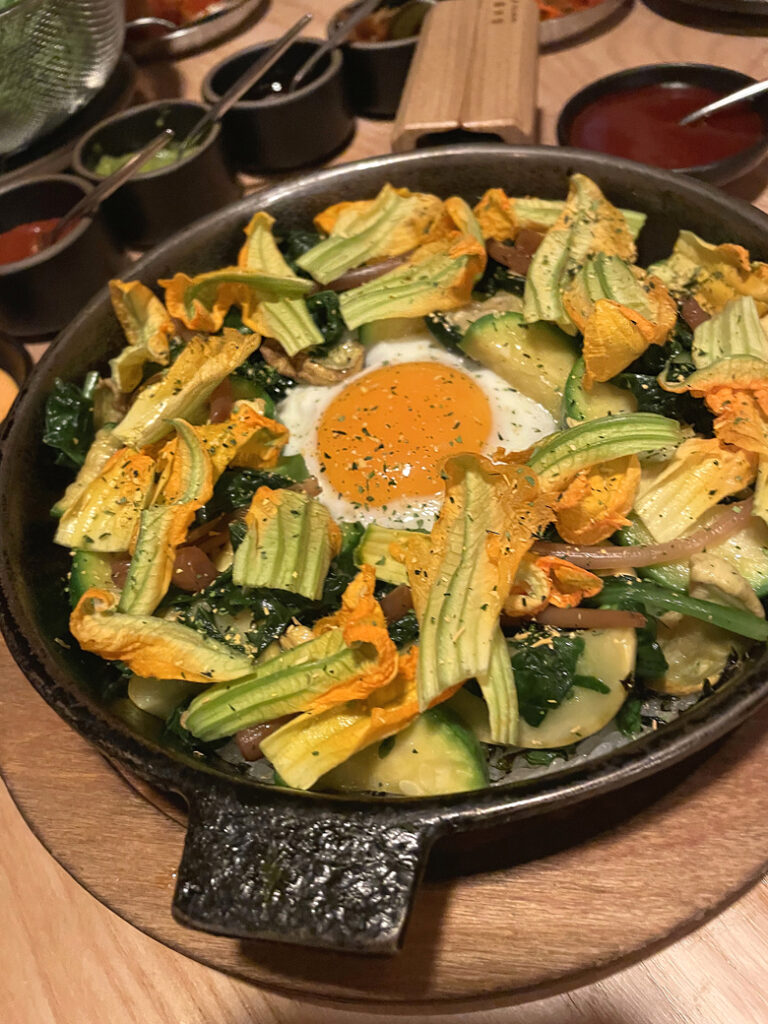
It garnered a Michelin star only a year after opening its doors in 2021. That same year, it was also named one of the “Best New Restaurants in America” by the Robb Report; one of the “50 Favorite Restaurants” by the New York Times; a “Best New Restaurants in America” by Esquire; and highlighted in Eater’s “Best New Restaurants.”
When it comes to the Korean charcoal barbecue restaurant, San Ho Won in San Francisco, the hype is not only real, but richly deserved, as I found out when I dined last month.
Then again, one would hardly expect anything less from Chef-Owner Corey Lee, who also operates Monsieur Benjamin and whose flagship San Francisco restaurant, Benu, has glittered with three Michelin stars for years. San How Won is a collaboration between him and Chef Jeong-In Hwang, who moved from Korea to San Francisco in 2016 to first work at Benu.
Sure, you’ve probably had your fill of Korean barbecue over the years. But none like this, with an unmistakable clarity and purity of flavor. Nothing tastes muddled, nothing gets lost. Instead, every bite is exuberant.
Indeed, pretty much everything is made in-house, down to the binchotan that fuels the fiery grills. Take a seat at the bar encircling the kitchen for a view of the action. Or if you gather with a group and plan ahead to book the private room, you’ll really get a show when one of the cooks expertly sears your meat on a separate grill in the corner.
No matter how or where in the restaurant you dine, a big kettle of hot buckwheat tea will be set down at the table.
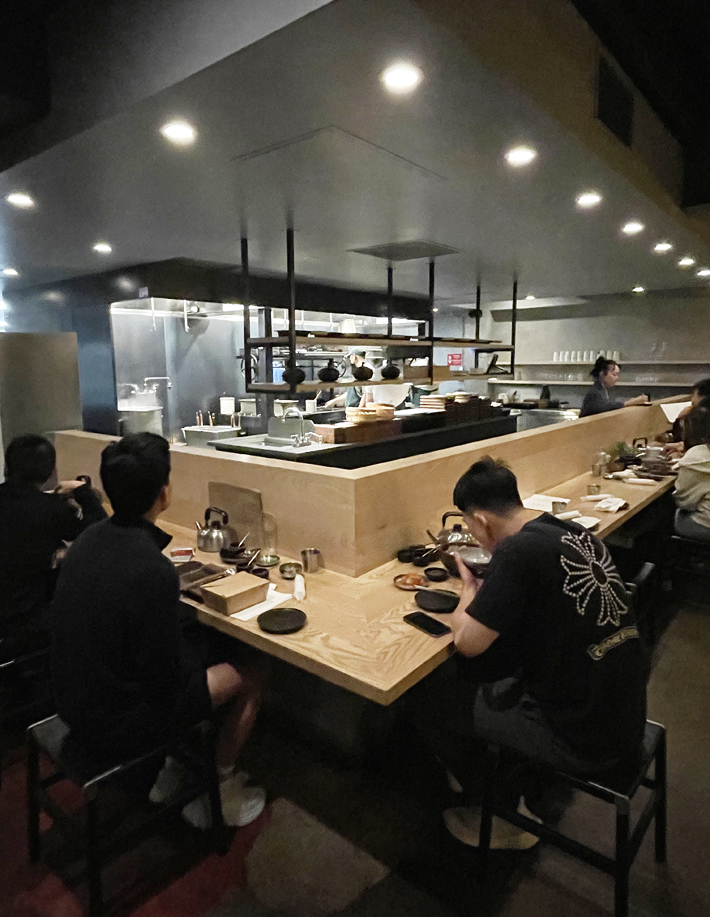
Don’t neglect the curated list of Korean soju and other liquors or the two featured cocktails. The Mae Hwa ($15) is a mix of Seoul Night plum soju, vermouth, and maesil (Korean plum extract) that’s neither overly boozy nor too sweet, but quite refreshing.
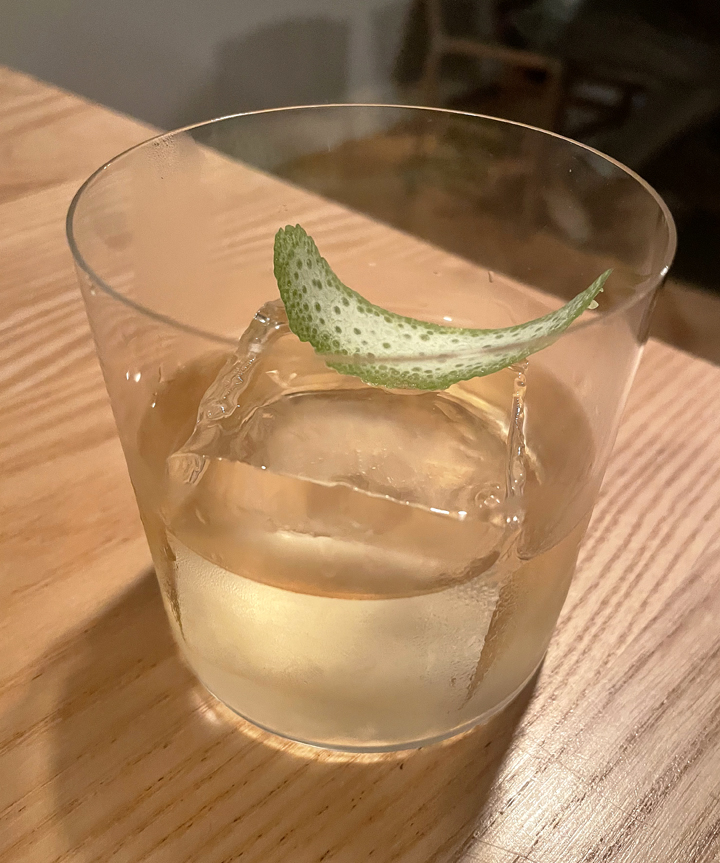
This is food that’s made for sharing. Ideally, come as a group of four or more so that you can really partake in a variety of dishes. There’s a $110 prix fixe house menu or the option to order a la carte, which is what we did.
Banchan arrived gratis almost immediately to prime the palate with peanuts and anchovies so crisp, sweet, and profoundly briny-savory that you have to restrain yourself from downing the entire plate. There’s also a crunchy slaw of julienned summer vegetables stained vibrant red; and a small bowl of chilled, soft tofu drizzled with chili sauce that was light yet lively.

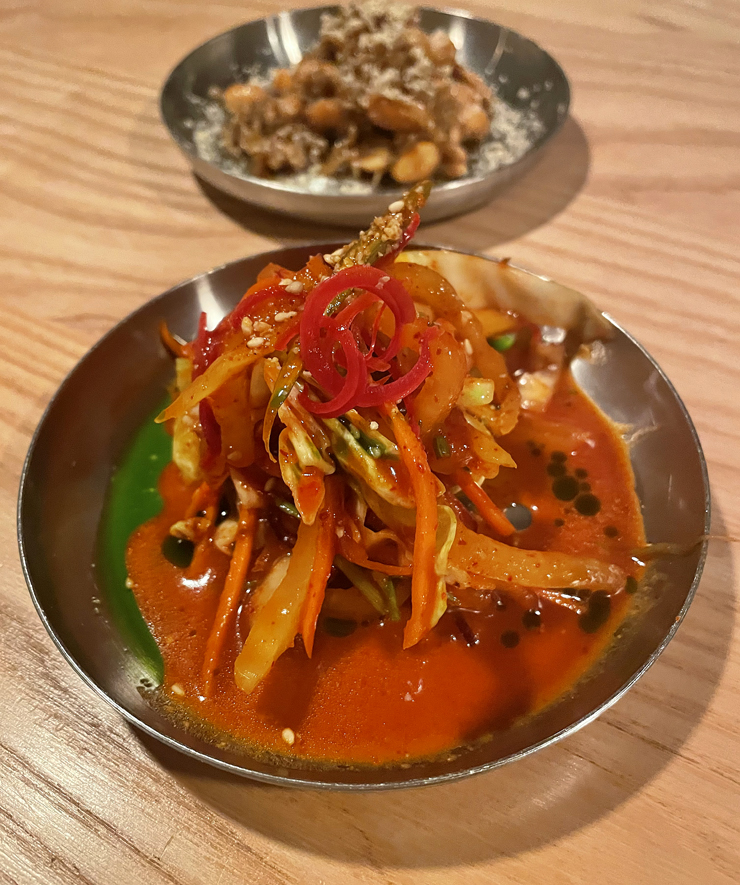
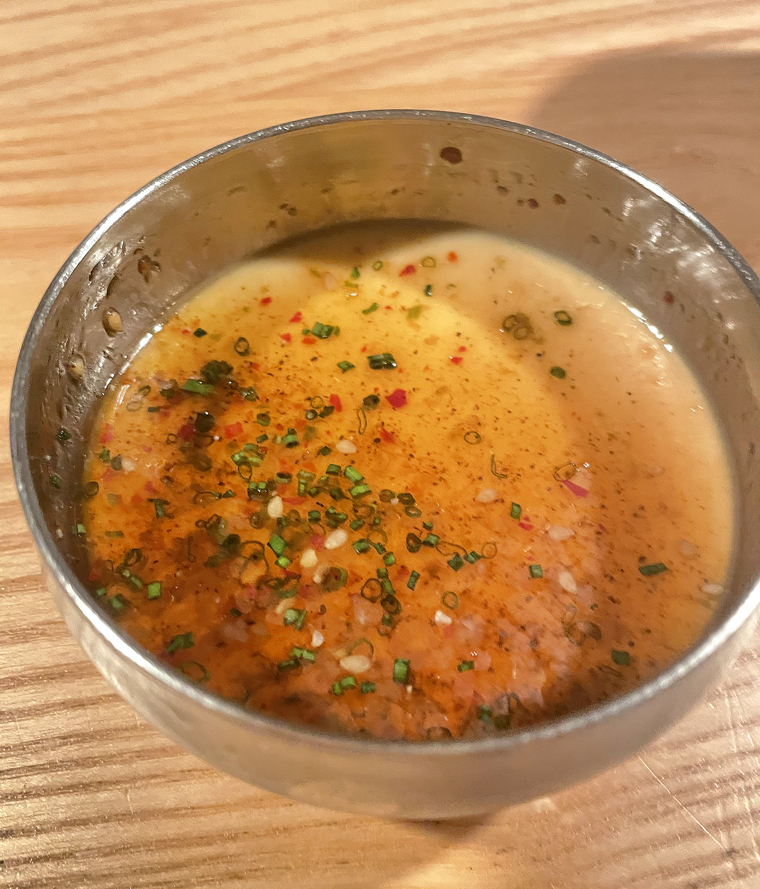
That was followed by baek kimchi or pear water kimchi ($6.5), striking in its pale color. The tightly coiled cabbage leaves are fermented in seaweed, onion, pear, and ginger — but no chili flakes — making for a more delicate kimchi with a hint of natural sweetness.
The haepari muchin ($8) is all about chewy texture with jellyfish strands piled high with slivers of cucumber, seasoned with wake-you-up hot mustard.
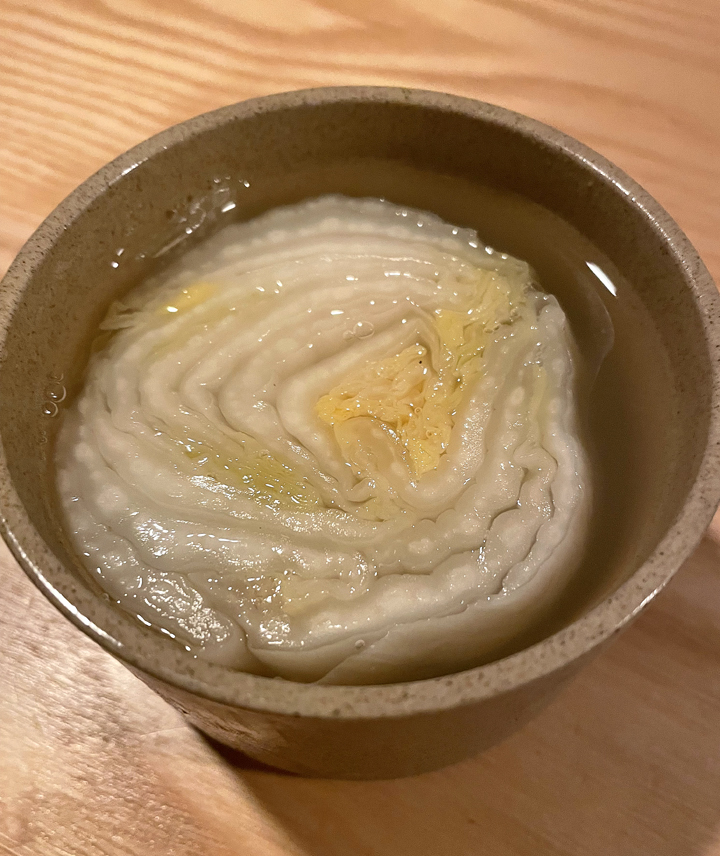
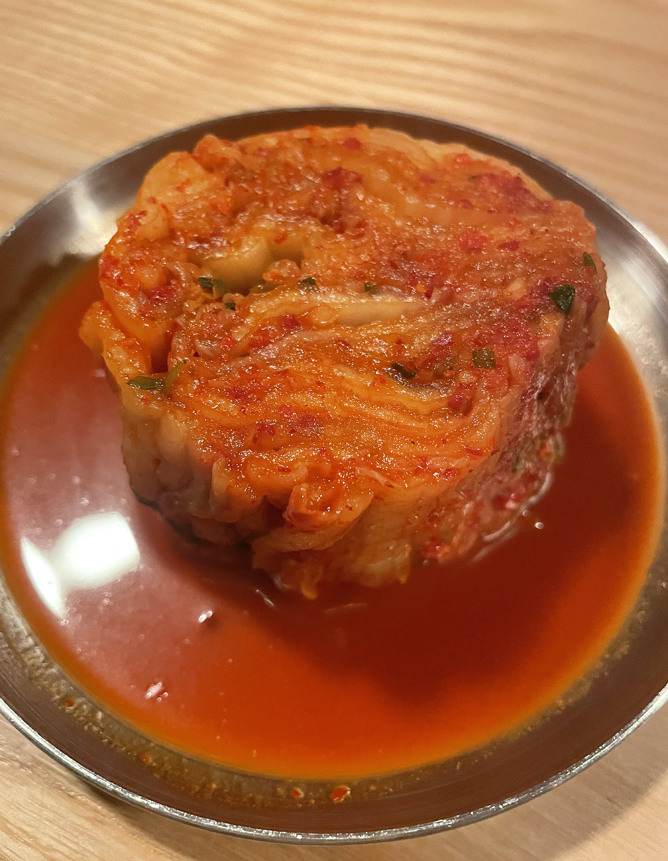
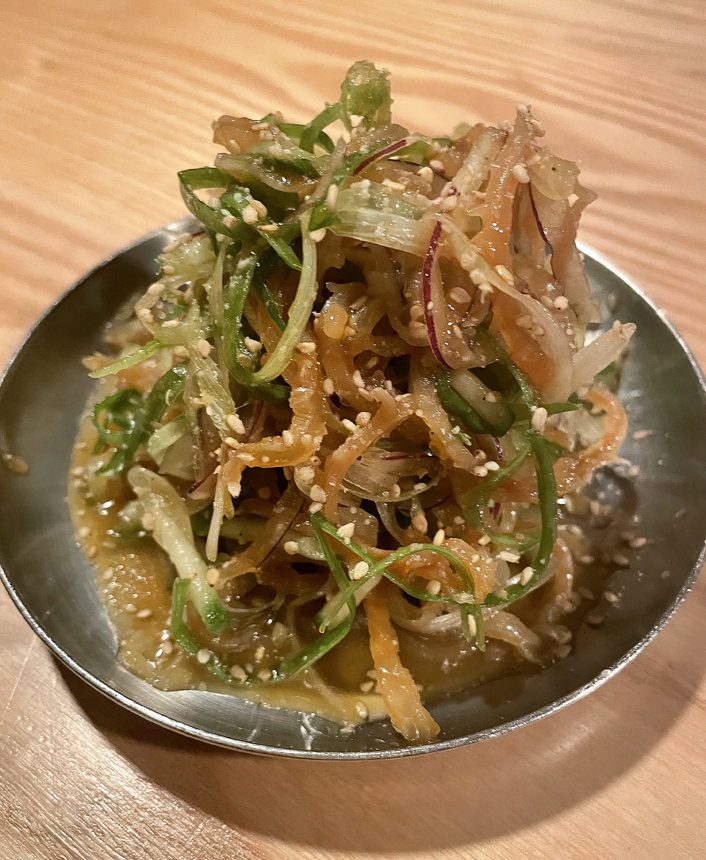
The kitchen also brought out a serving of the baechu kimchi ($6.5), a bolder tasting napa cabbage that was fermented with shrimp, seaweed, and 1,000-day sea salt.
One of my favorite appetizers — and one of the prettiest — is the hwe muchim ($32 to serve 2; $58 to serve 3 to 4). Large perilla leaves fanned around the plate to frame the raw halibut salad that’s mixed with smelt roe, and vegetables in a spicy gochujang sauce.
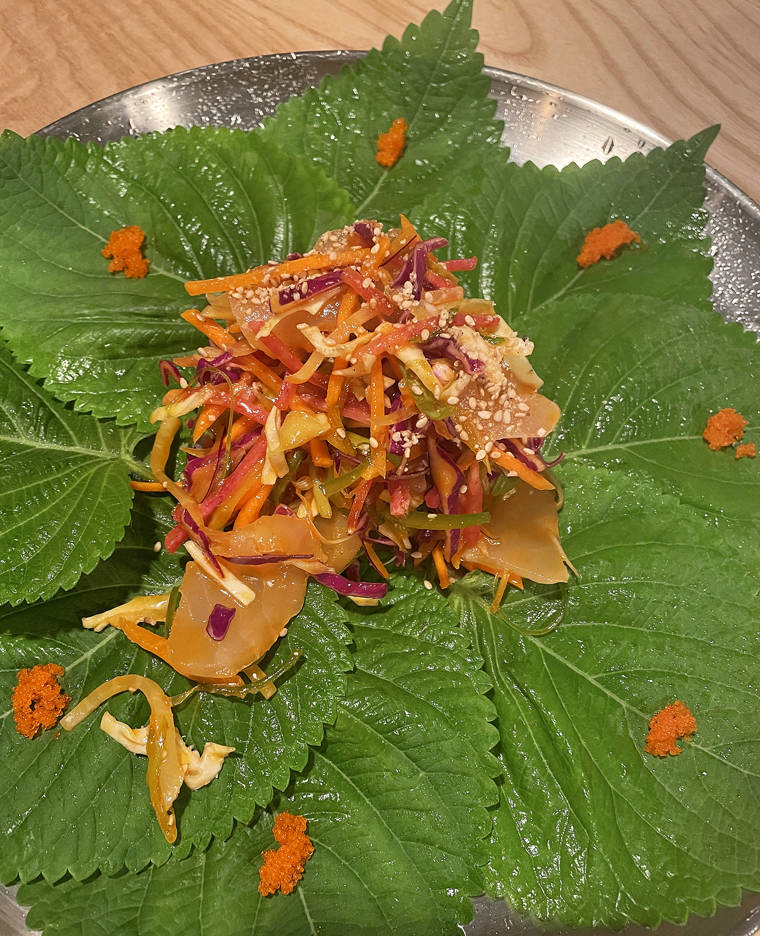
Take a leaf, line it with toasted seaweed, then spoon on some of the salad. Fold it up taco-style to eat the entire thing. I’m a huge shiso fan, so I couldn’t get enough of the way the highly aromatic leaf imbued everything and how its minty, citrusy taste was the perfect foil to the spicy filling.
Who doesn’t love a crispy onion pancake? The sanma pajeon ($18) arrived in its own little cast-iron pan, filled with green onions and slices of mountain yam that have a sticky texture that contrasts with the golden, crunchy pancake exterior.
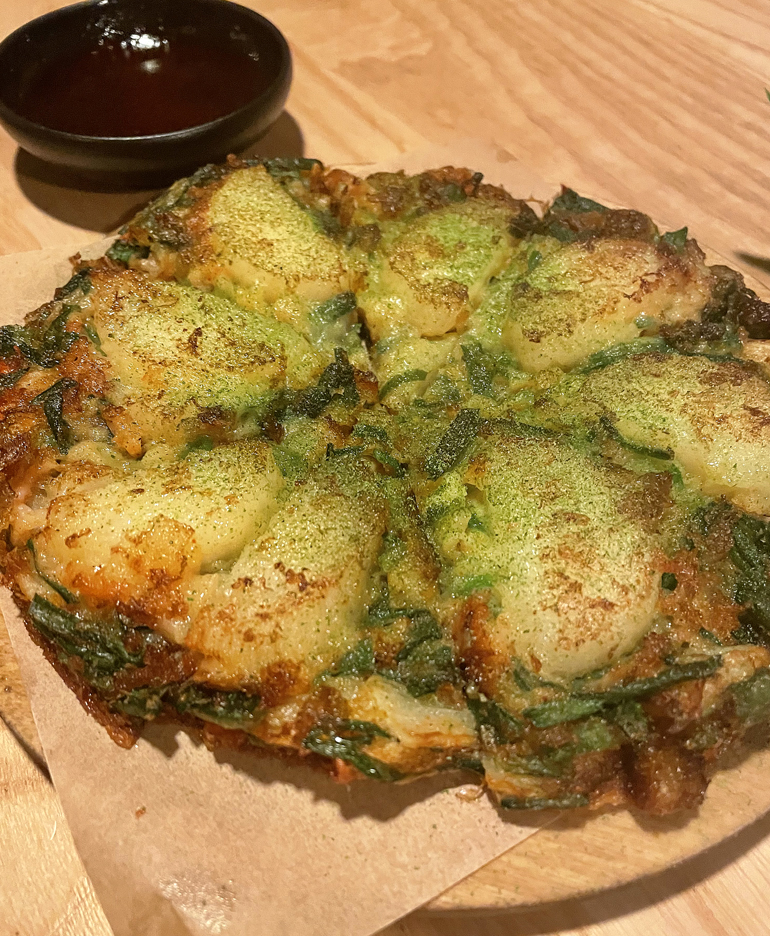
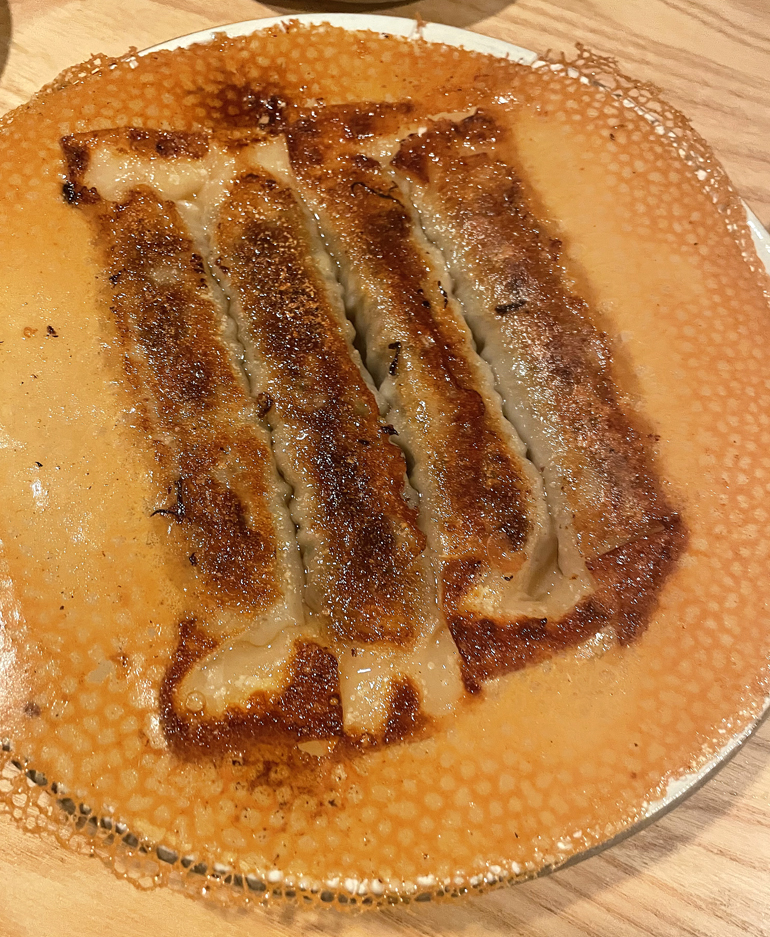
I can never resist a dumpling of any sort, and the galbi mandu ($16) are definitely worth saving room for. These griddled cylindrical dumplings are bonded together by a crispy, lacy veneer. Each is filled with ground Korean beef short rib meat that gushes with rich juice.
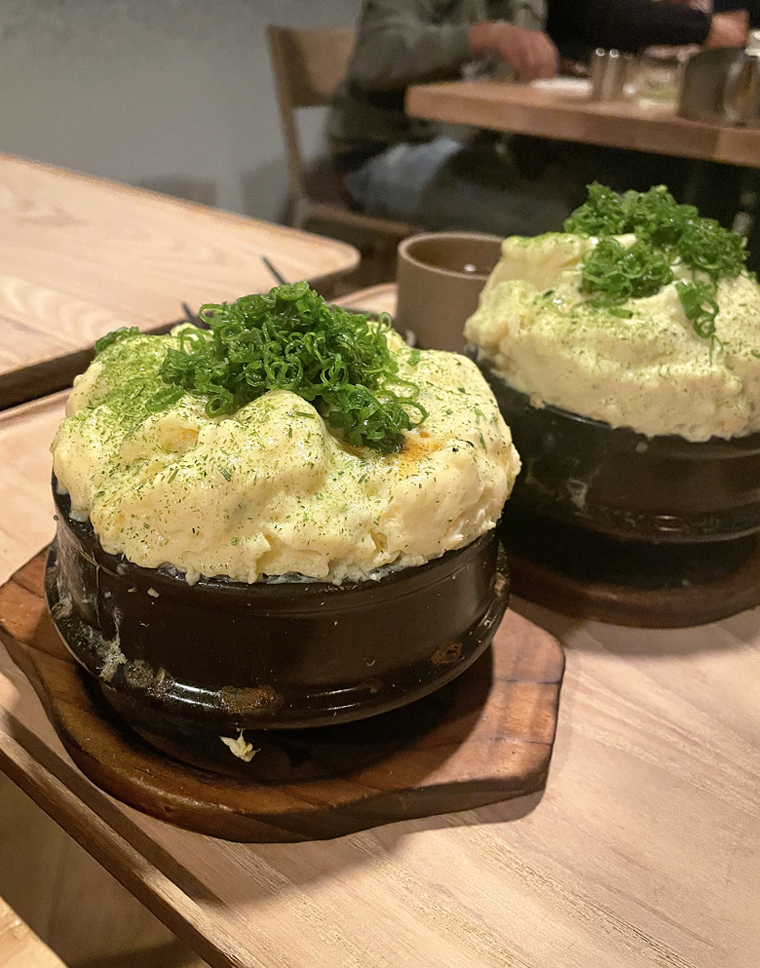
Order the savory egg souffle ($18) and all eyes will turn in the dining room. It’s a compelling dish that rises from the top of a steaming stone pot like a cloud. It’s as if you took the creamiest, most tender scramble and injected helium into it.
The server will carefully scoop it out into individual bowls for you, garnishing each with rock seaweed sauce and spicy anchovy broth for a bodacious boost of umami. This is such a comforting dish. It’s what you want on a foggy San Francisco night or anytime you’ve endured a stressful day. It reminds me in taste of my mom’s Chinese-style, steamed egg custard with ground pork — only taken to a loftier level.
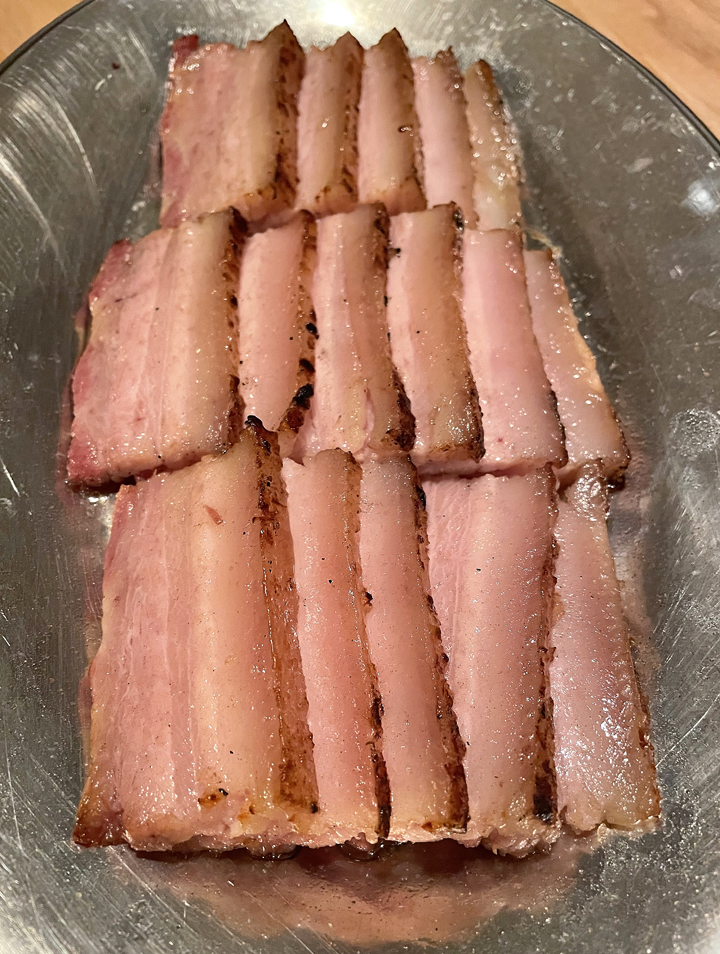
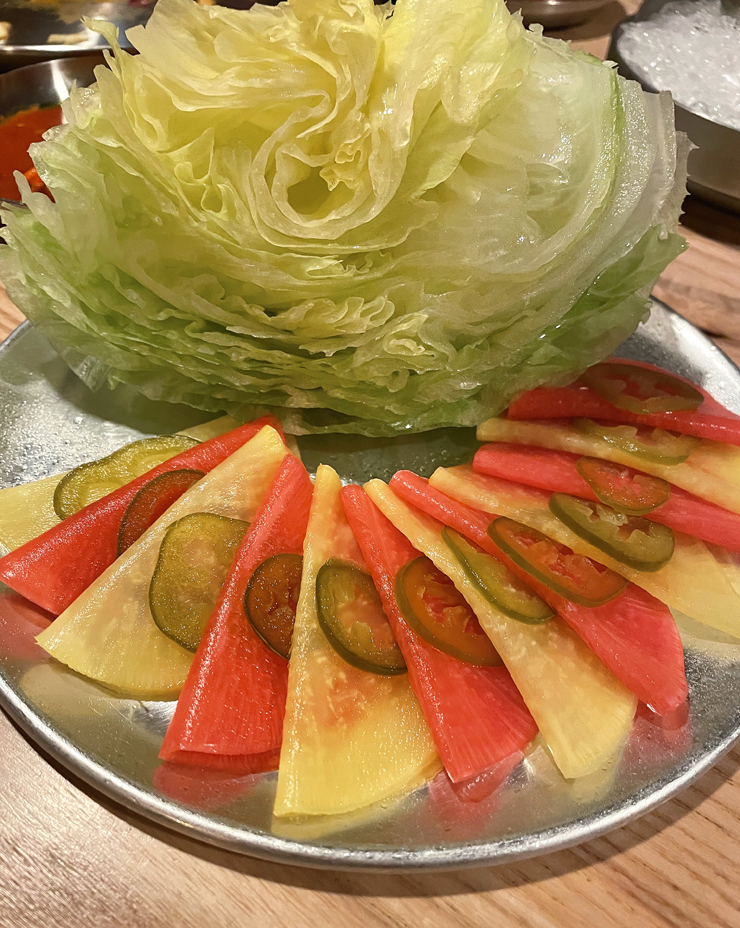
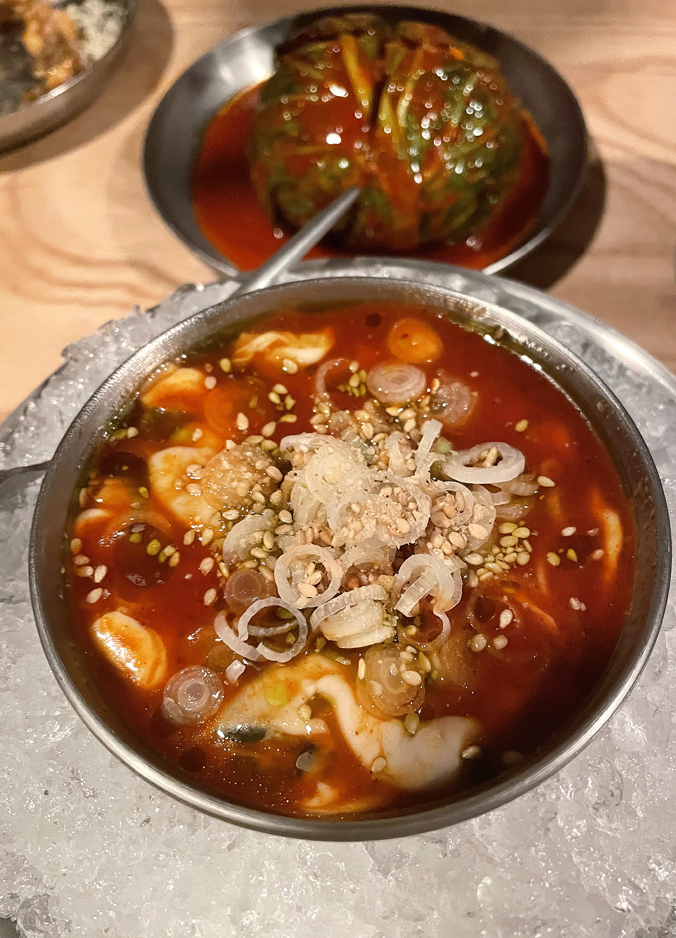
Often, there are specials of the day to consider. One that we couldn’t pass up was the pork belly bossam ($94) cooked on the charcoal grill. Succulent slices of pork belly, rimmed in glistening fat, were set before us, along with lettuce leaves, pickled radishes, cabbage kimchi preserved with shrimp and squid, preserved oysters, and a slew of condiments that included pickled jalapenos, house chili sauce, soybean sauce, and scallion sauce.
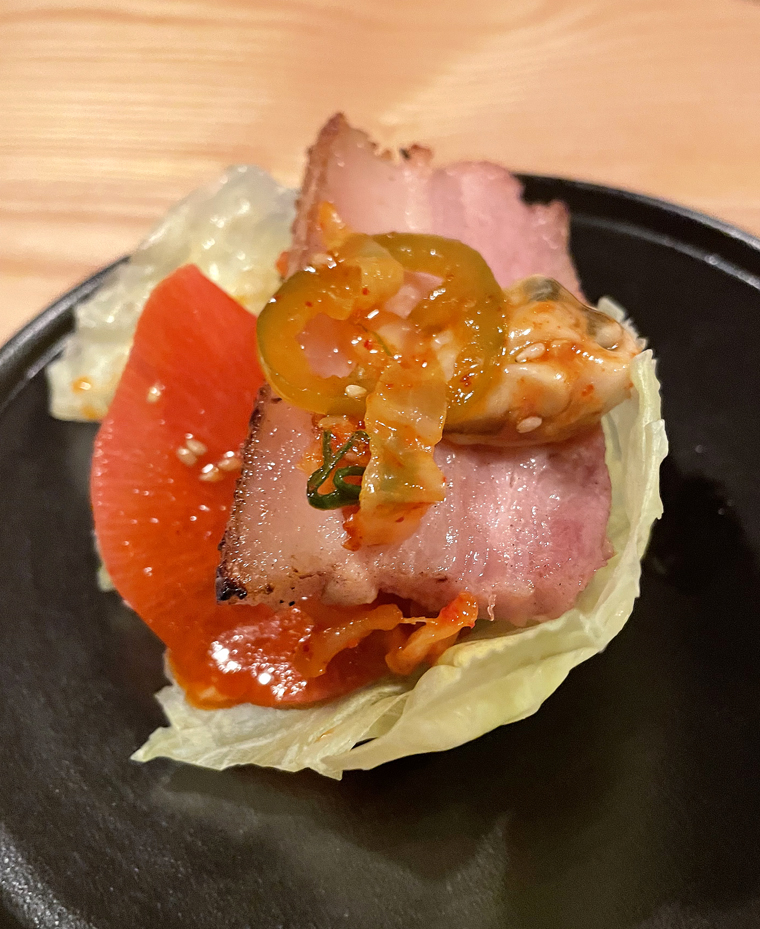
Take a lettuce leaf, layer on a slice of pork belly, then add whatever else you wish before folding up to enjoy. The preserved oysters, while a shellfish, actually act to amplify the meaty flavor of the pork. It all makes for a succulent bundle of tangy, funky, and savory goodness. But truth be told, the pork belly is so divine, you could eat it on its own and be fully content.
Also from the barbecue menu, we had the beef neck fillet (6 ounces for $38). Smoky tasting, it had a nice toothsome bite while still being quite tender.
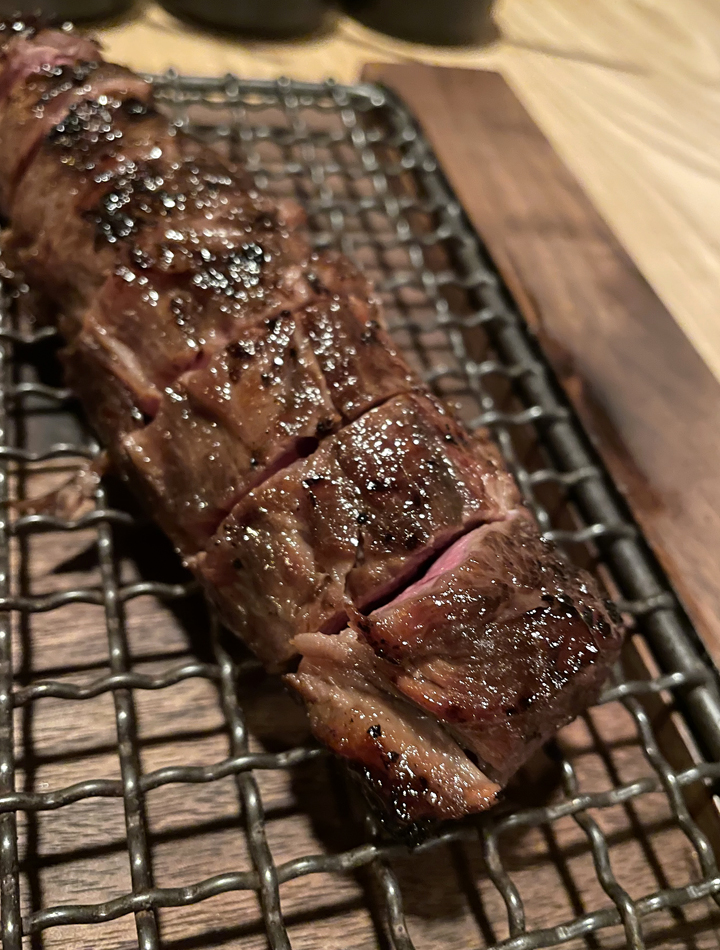
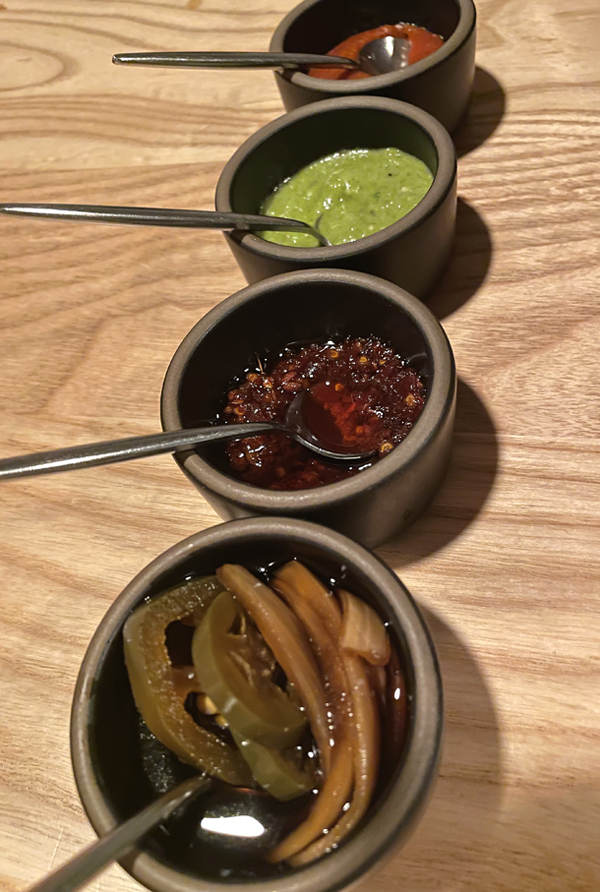
Whatever else your order, you simply must zero in on the house double-cut galbi (8 ounces for $56). I’ve enjoyed my share of Korean short ribs over the years, but this has got to be the juiciest, most luscious tasting one I’ve ever had. Whoever coined the now hackneyed description of “melts in your mouth” surely did so after one bite of this meat. Honestly, I don’t even eat a lot of beef, but this would make me devour much more of it in a heartbeat.
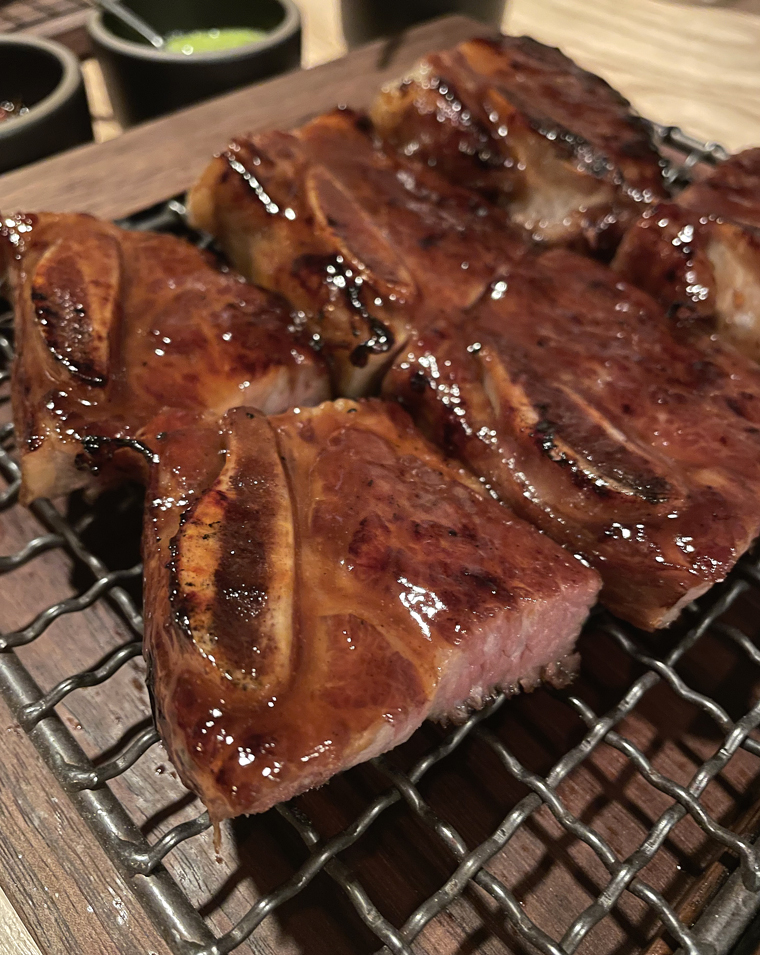
Fans of sticky-chewy mochi will love the skewers of grilled tteok ($6) glazed with maple and soy sauce. These rice cakes are house-made, and you can really taste the difference here, because they’re not all just texture, but actually have a fresh rice taste to them, too.
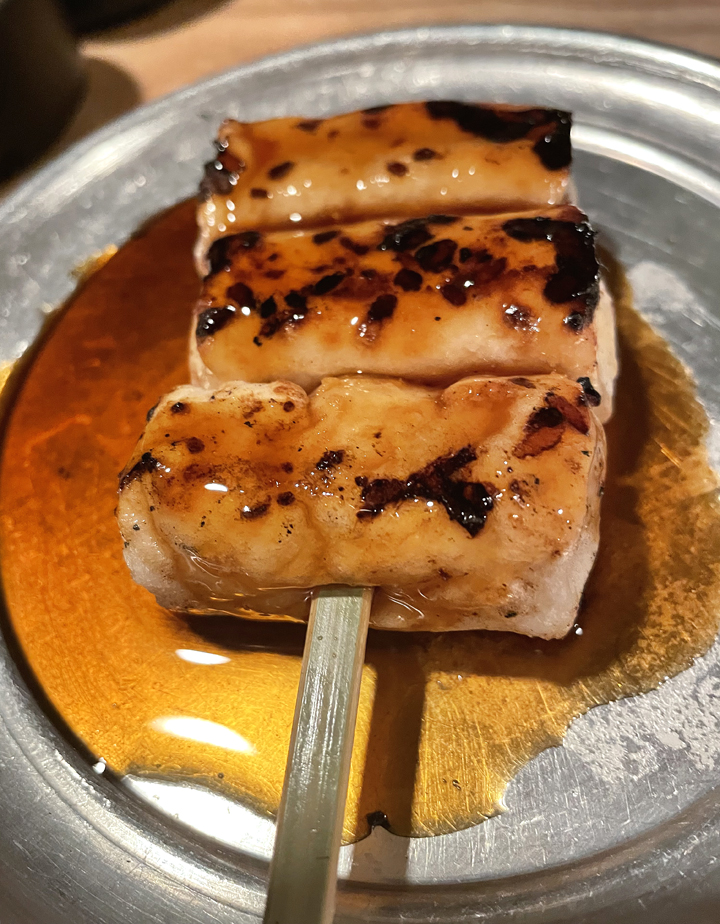
The seasonal vegetable bibimbap ($32) featured a gorgeous array of squash and squash blossoms, along with a deep orange-yolked fried egg atop a foundation of rice in a shallow, hot stone pot. Everything gets mixed together, with the summery, sweet veggies folded into the both tender-chewy grains of rice, as well as the worth-fighting-for crispy grains.
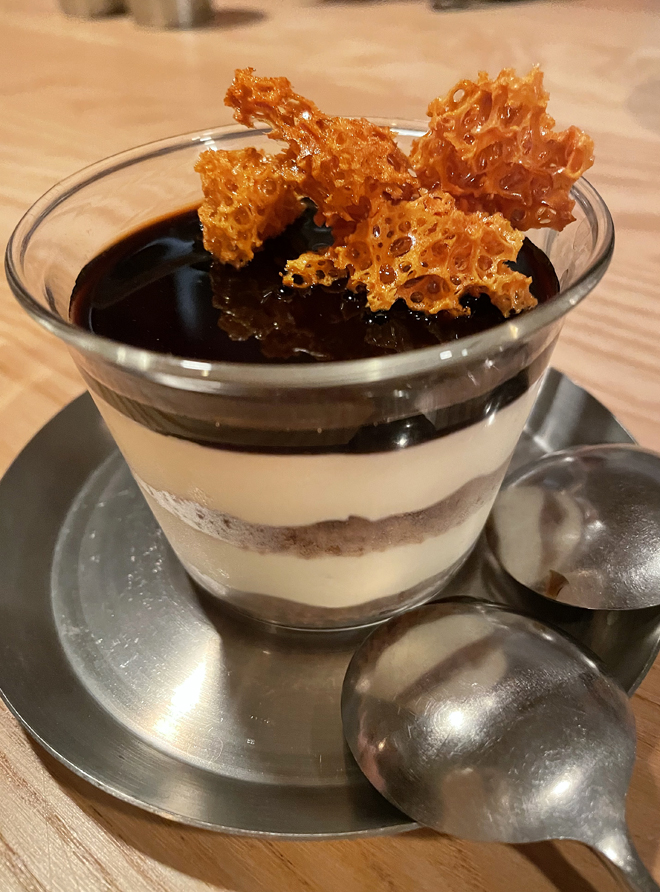
After getting mesmerized by the dalgona candy that played a pivotal role in Netflix’s “Squid Game,” I had to end my meal with the dalgona cheesecake ($12). This isn’t a slice, but a parfait that gets topped with dark, assertive tasting coffee gel. A separate container of the airiest honeycomb with a lovely burnt sugar taste comes alongside, so you can add pieces whenever you want without worrying that they’ll end up soggy.
I’ve made honeycomb before from sugar that’s melted, then mixed with baking soda to aerate it, but I’ve never had one as ethereal as this one. One of the managers explained that the kitchen achieves this unique texture by making a huge batch of honeycomb. After it cools in a deep-sided pan, the thick walls of the honeycomb are cut away, leaving the lighter, bubbled interior to be used on this dessert. It’s just another example of the attention to detail this restaurant takes.
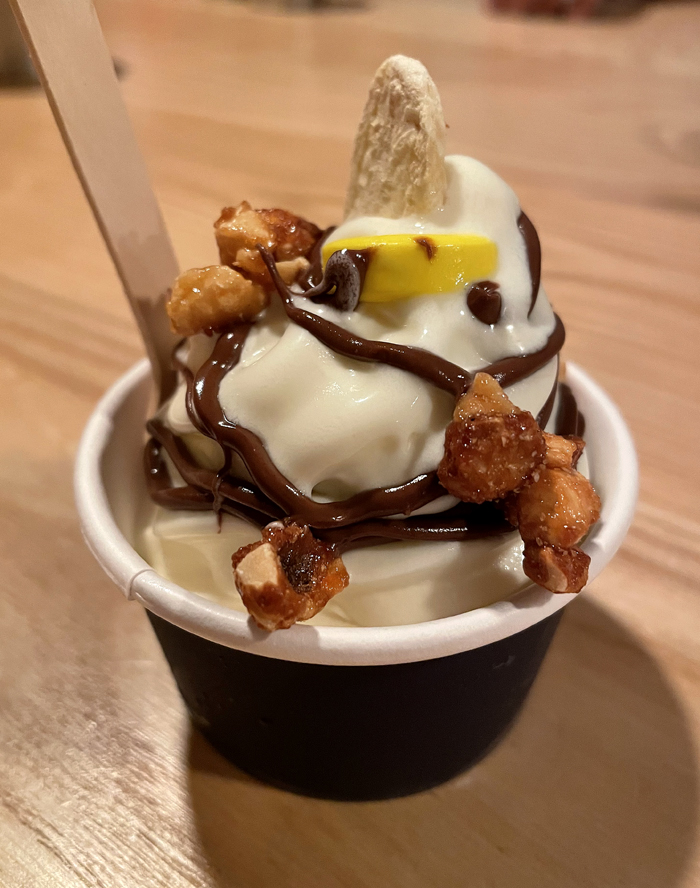
The kitchen also brought out servings of banana soft serve for us to try. Topped with candied peanuts, banana chips and a drizzle of house-made hazelnut-chocolate, it made for an indulgent way to cool off the taste buds after all that spicy kimchi.
It was just by happenstance that I actually ended up dining at San Ho Won twice in the span of three weeks. The food is so craveable, though, that I already can’t wait to go again.
